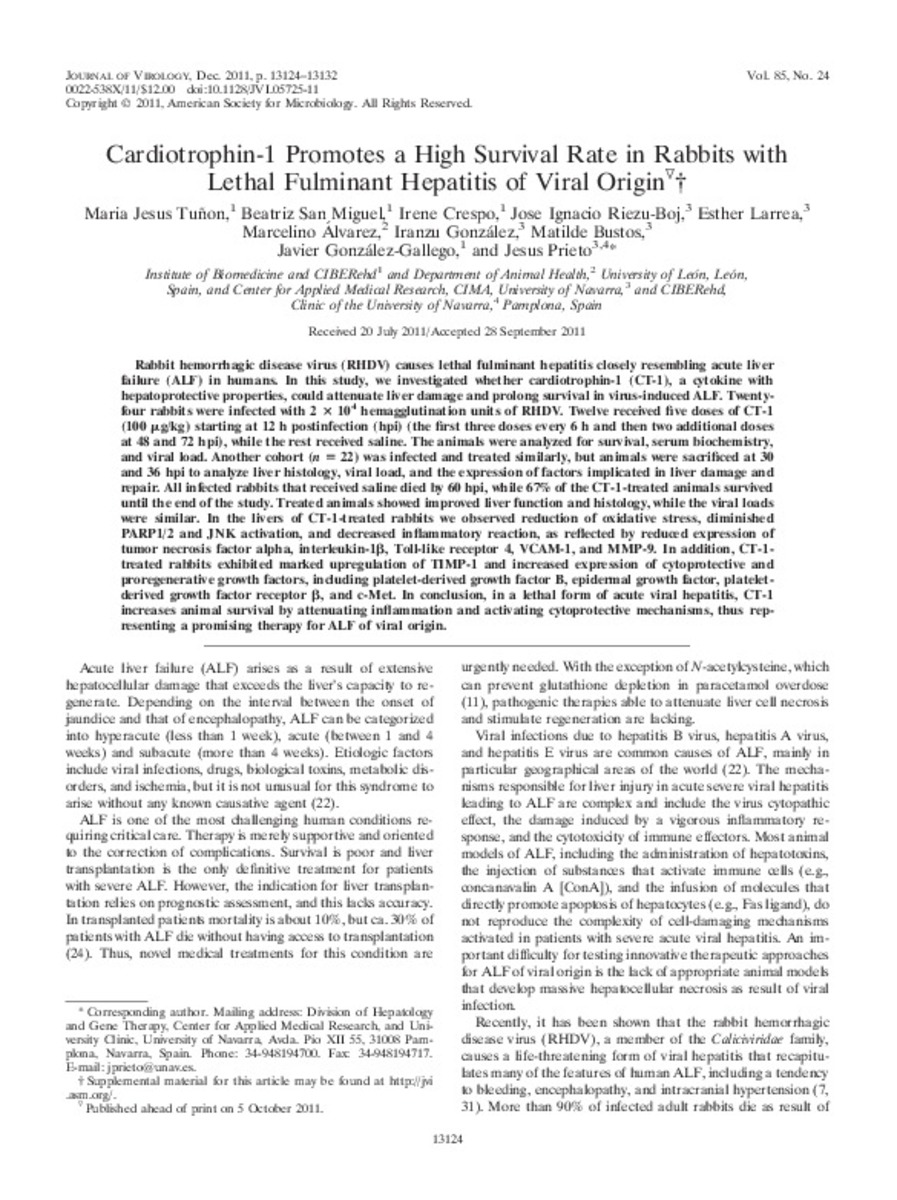Cardiotrophin-1 promotes a high survival rate in rabbits with lethal fulminant hepatitis of viral origin
Palabras clave :
Caliciviridae infections/veterinary
Cytokines/administration and dosage
Hemorrhagic disease virus, rabbit/pathogenicity
Hepatitis, viral, animal/drug therapy
Hepatitis, viral, animal/mortality
Immunologic factors/administration and dosage
Fecha de publicación :
2011
Editorial :
American Society for Microbiology
Cita:
Tunon MJ, San Miguel B, Crespo I, Riezu-Boj JI, Larrea E, Alvarez M, et al. Cardiotrophin-1 promotes a high survival rate in rabbits with lethal fulminant hepatitis of viral origin. J Virol 2011 Dec;85(24):13124-13132.
Aparece en las colecciones:
Estadísticas e impacto
0 citas en

0 citas en

Los ítems de Dadun están protegidos por copyright, con todos los derechos reservados, a menos que se indique lo contrario.









